Red ants are found across the United States. Some of the red ants in the country are feared as they can bite.
Others show destructive behavior in their path.
Most types of red ants can even enter homes. They may even nest if they find suitable food sources.
Table of Contents
1. California Harvester Ant
One of the most common types of red ants in Southwestern US states is the California Harvester Ant (Pogonomyrmex californicus).
This is a species that forages on seeds and larvae of various insects such as moths.
A diurnal species, California Harvester Ant easily makes its way for food using entrances to its nest.

Seeds, larvae, and other types of food are carried back to the nest to be stored. Small colonies are established by the species.
A single California Harvester Ant colony can count hundreds of ants.
These nests are led either by one queen or by multiple queen ants working together.
2. Southern Fire Ant
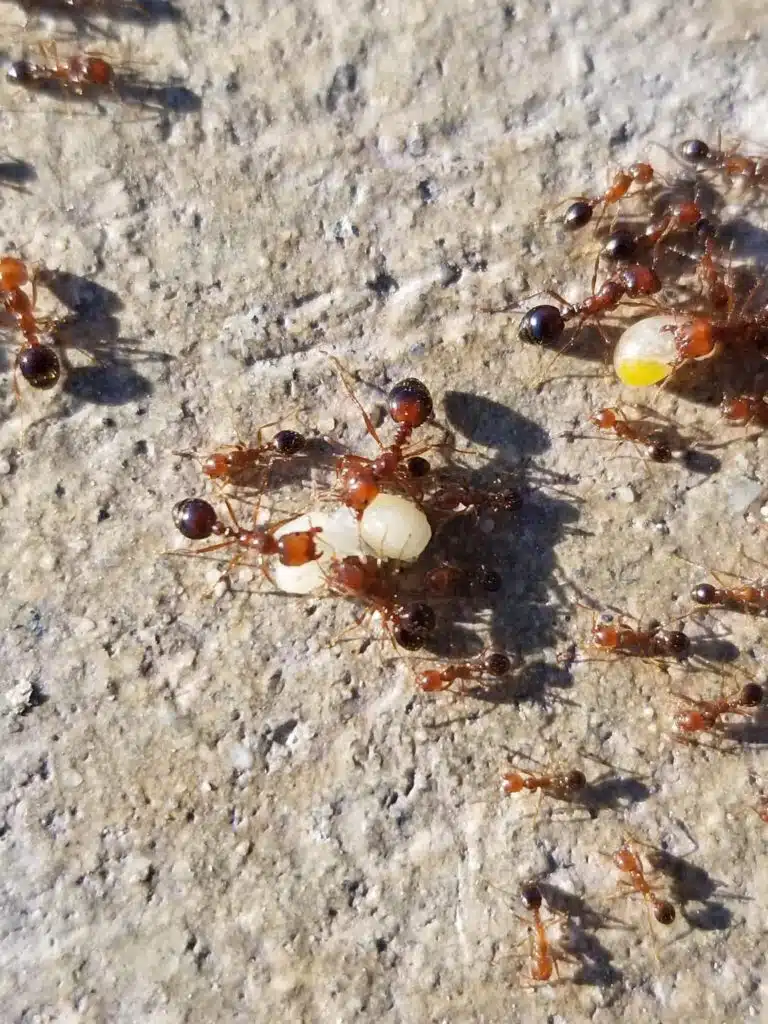
Southern Fire Ants (Solenopsis xyloni) have a slightly wider distribution than California Harvester ants. If the latter is seen from California to Utah, Southern Fire Ants live in a wider area from California to North Carolina.
Southern Fire Ants also sting. They show a high aggression level often being ready to defend their nests at the cost of their lives.
Still, the sting of the Southern Fire Ant is described as less painful than the sting of Red Fire Ants.
These ants move around for food which they bring and store in the nest.
Seeds of various plants are among the easiest foods for them to carry.
Southern Fire Ants are also adapted to eating honeydew and may be seen on plants covered in bugs such as aphids.
3. Red Harvester Ant

Red Harvester Ants (Pogonomyrmex barbatus) are some of the most dangerous types of Red Ants. They inhabit arid areas and desert areas where they build large underground nests.
These types of ants defend their nests from humans and animals with potent and venomous stings.
The venom of these ants is highly dangerous but it mostly aims at its traditional predators such as lizards which eat these ants.
Red Harvester Ants collect seeds and insects which they bring back to the nest to store as food.
Allergic reactions to the bite of these species have been noted when people interact with their nests.
Still, the numbers of the species have been declining in some areas as Red Harvester Ants compete for seeds and food with other ant species.
4. Chestnut Carpenter Ant
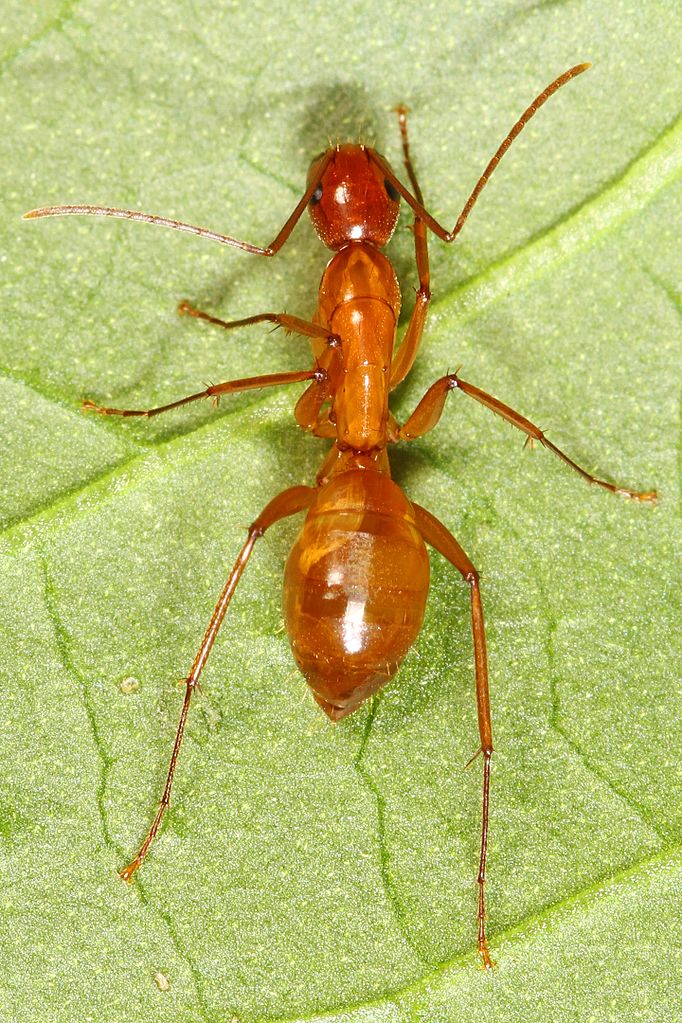
Chestnut Carpenter Ants (Camponotus castaneus) are some of the most common red ants in the Northern parts of the US and Canada.
This is a species that has a dark red color, as opposed to the brighter red coloring of Southern ants.
It’s believed red ants in the North have darker nuances as they need to absorb extra heat from the sun.
Only coming out for food at night, these types of ants live in woodlands.
They nest in wood that’s located on the ground. Rotting wood that provides partial nest cover is an ideal place for these ants to nest under.
Chestnut Carpenter Ants nest in the soil as they need high humidity to survive.
5. Florida Harvester Ant

This type of red ant (Pogonomyrmex badius) is native to Florida.
It has a smaller size compared to large Chestnut Carpenter Ants and also a docile nature.
However, Florida Harvester Ants may sometimes sting. While these docile ants rarely sting, they inject painful poison which makes stinging pain last longer than with other species.
No special management techniques are required for the species unless you uncover its mounds in your garden.
Seeds are often stored as food in these large mounds.
Florida Harvester Ants may cover the entire yard looking for food. They use scent trails to pick up their quest the following day.
6. Red Imported Fire Ant

Red Imported Fire Ants (Solenopsis invicta) are some of the most dangerous types of red-biting ants in North America.
This is a species that aggressively defends colonies and mounds established close to inhabited areas.
These ants can be found in gardens, parks, pastures, and even on the lawn.
Management techniques are required as these ants can bite children and pets with their highly painful necrotoxic venom.
Multiple management techniques have proven successful against these ants.
Injecting chemicals in ant mounds is one of the methods of quickly killing these ants. Setting up baits around the mound may also prove an efficient method to kill these ants.
The queen needs to be killed or a new nest may soon be established.
7. Apache Twig Ant
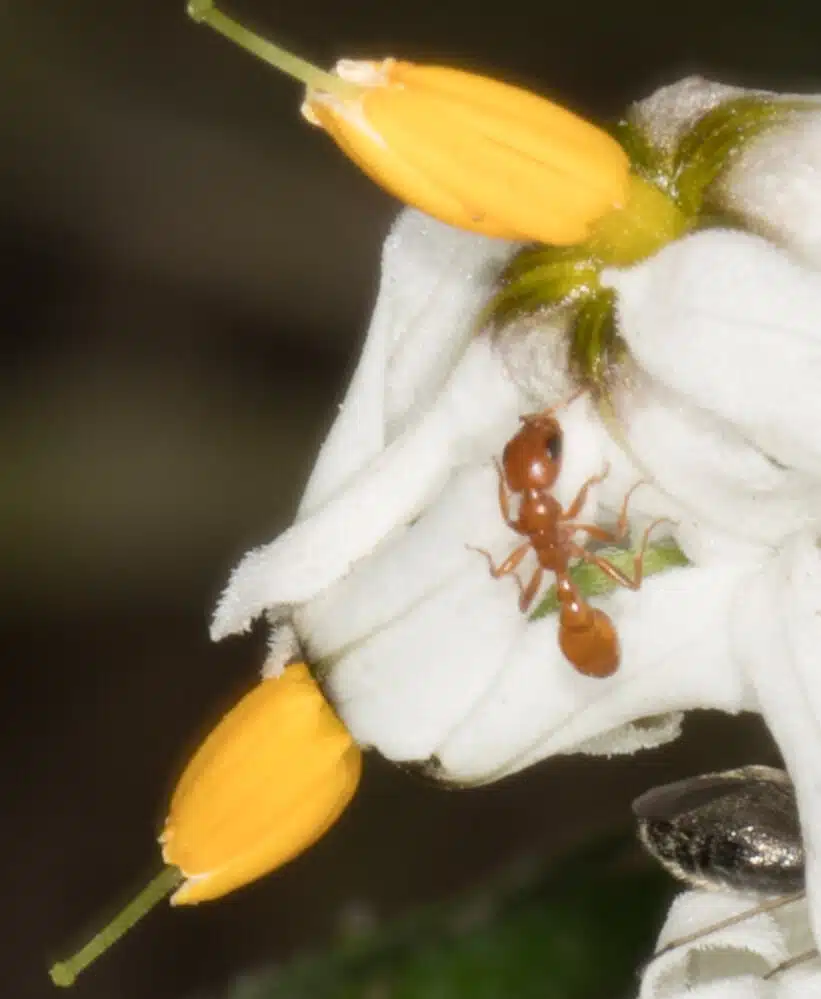
This ant species (Pseudomyrmex apache) has a yellow, orange, or orange-red color.
It lives in the Southwestern parts of North America where it prefers woodlands to other habitats.
These ants are seen in oak, mesquite, or juniper woodlands, typically along The West Coast.
Nesting sites include the dead areas of these trees. Apache Twig Ants rarely burrow their way to these branches as they rely on the burrowing galleries of beetles that eat wood.
Both these ants and the wood-burrowing beetles share their host with hurt local trees.
8. Desert Leaf-cutter Ant
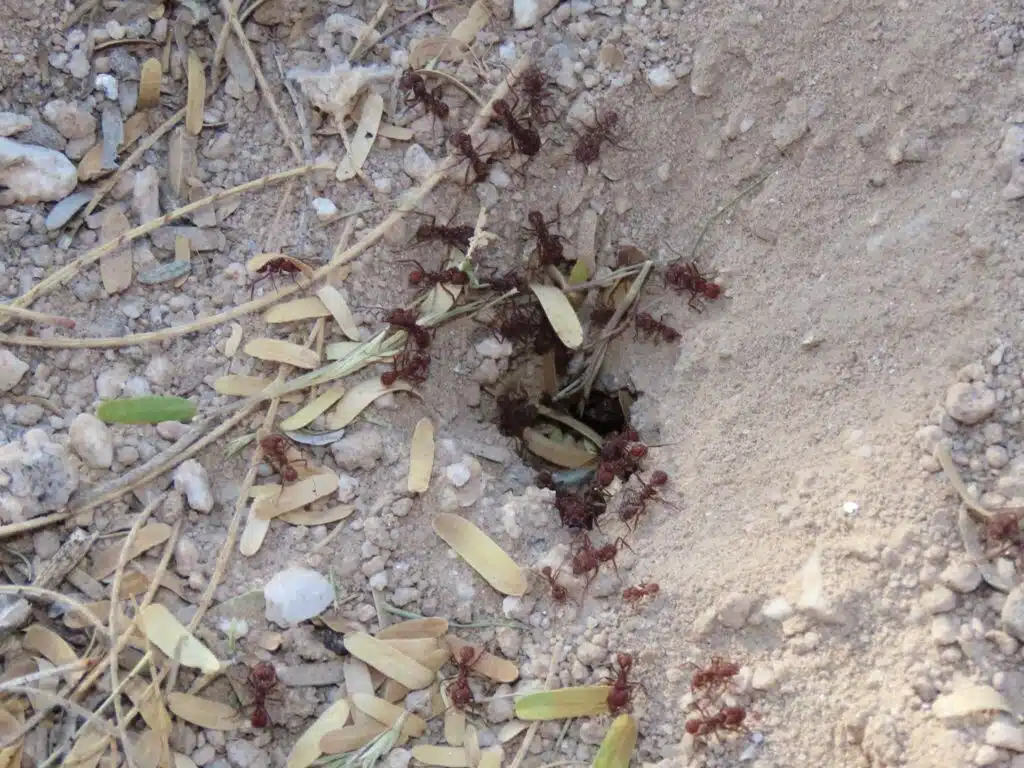
These types of ants are known to collect leaves for food. Small parts of cut-up leaves are carried back to their nests in active foraging behavior.
Desert Leaf-cutter Ants (Acromyrmex versicolor) have a dark red color with an almost rusty undertone.
They are known to inhabit areas with green vegetation and desert scrub areas where there’s only dry vegetation left.
Adaptability to foraging both in humid and dry locations gives this species stable numbers in North America.
9. Pallid Twig Ant
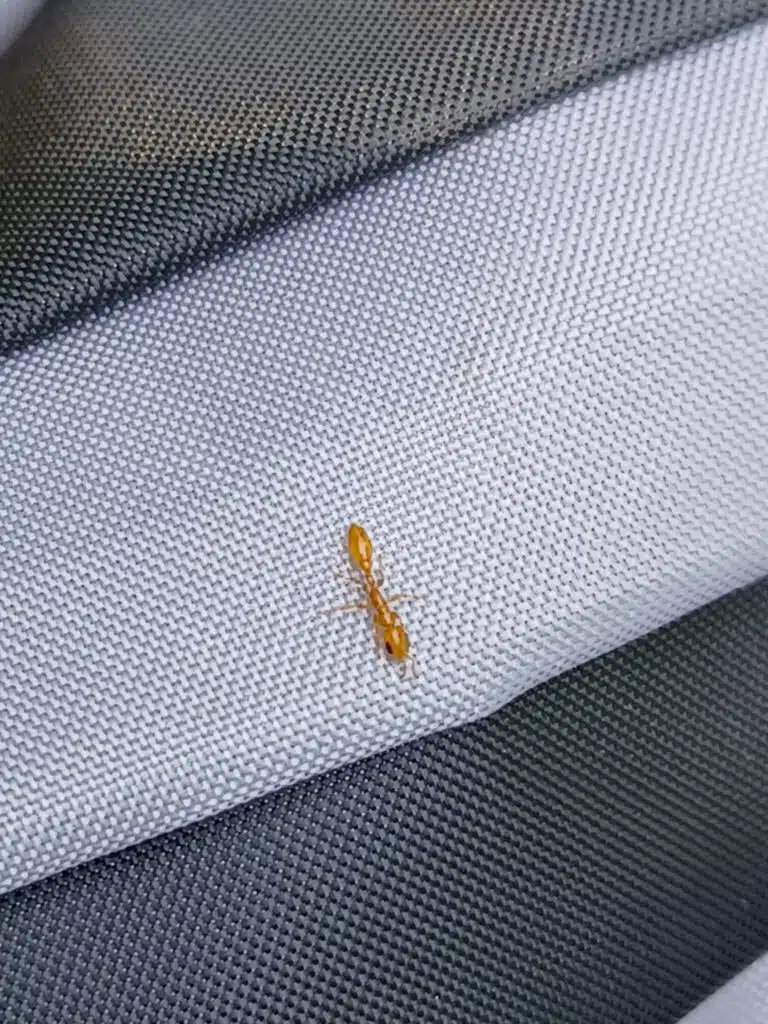
These types of ants (Pseudomyrmex pallidus) feed on nectar and living and dead insects.
Pallid Twig Ants don’t gather food in the nest for their consumption. All pollen and insects carried back to their nests have the role of feeding Pallid Twig Larvae.
These ants nest in the stems of dead plants.
Hollowed-out stems are ideal as chambers to lay their larvae. Some of the largest excavated dry-stem nests of the species measure around 20 inches.
10. Navigating Big-headed Ants
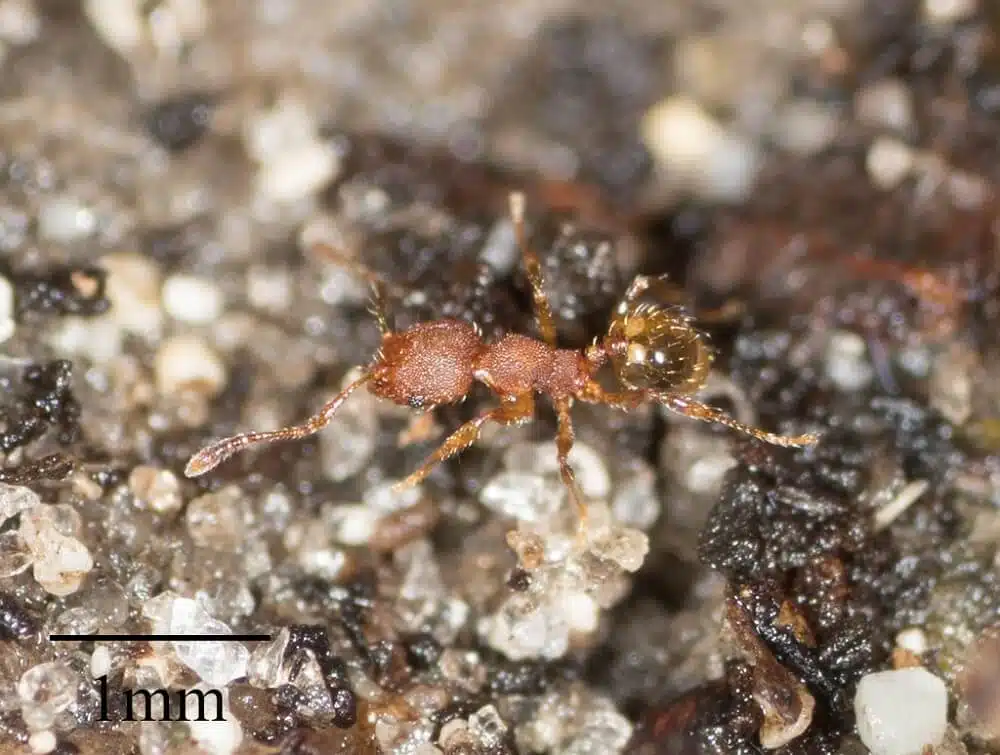
Southern states and Hawaii are some of the areas where high numbers of Navigating Big-headed Ants (Pheidole navigans) live.
These dark red ants are known to swarm and they can seem scary as they share their habitat with termites.
Many people confuse these ants with termites as some can make it indoors as mild pests.
Open food is one of the main reasons these ants enter homes. Sugary foods such as fruit plus meat attract these ants the most.
11. Northern Fungus-farming Ant

Northern Fungus-farming Ants (Trachymyrmex septentrionalis) live in Southern US territories, despite their name.
Southeastern plains including Florida area areas where the species is abundant. California is another state where a high number of ants live.
Arid sandy soils are ideal places for these ants to live. They nest in the ground and they show aggressive behavior to predators and perceived predators approaching the nest.
Northern Fungus-farming Ants have a dark red or red-brown coloring.
12. Tennessee Thread-waisted Ant

These types of small dark red ants (Aphaenogaster tennesseensis) are found in Southeastern US habitats.
Tennessee Thread-waisted Ants are some of the smallest red ants in this region of North America. They are a parasite of other ant species.
Some of the nests of other Aphaenogaster ants are used as their own nest which these ants infiltrate.
A carnivorous diet is specific to the Tennessee Thread-waisted Ant.
13. Comanche Harvester Ant
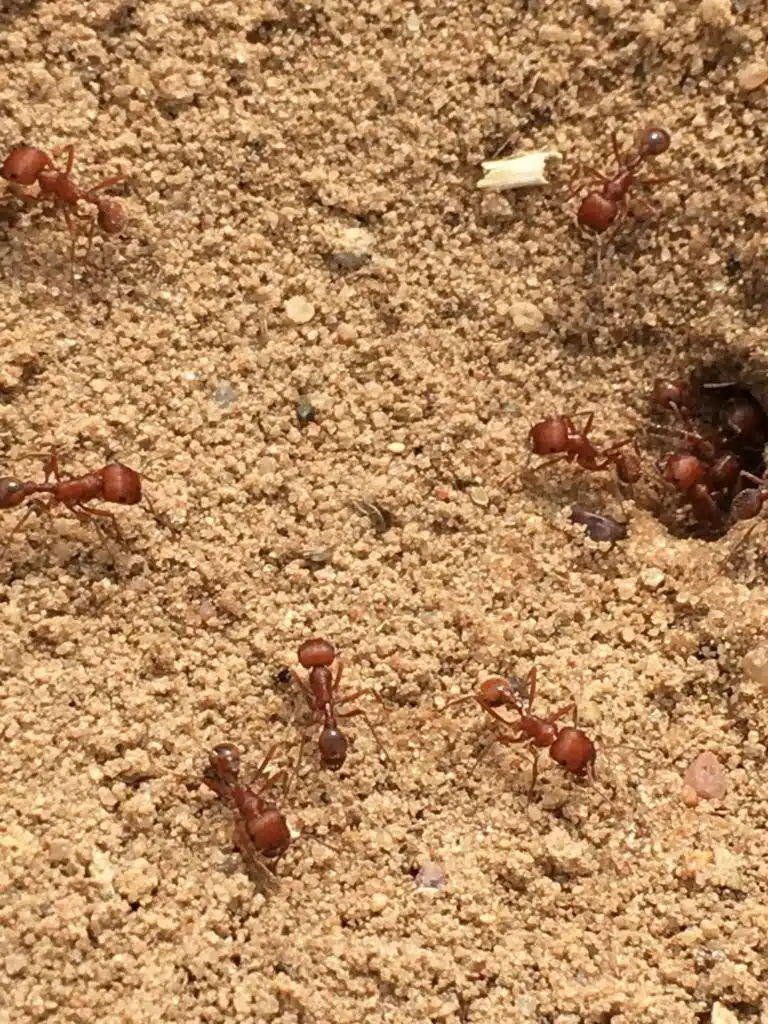
Arkansas, Texas, and Louisiana are some of the states where the Comanche Harvester Ant (Pogonomyrmex comanche) is confirmed today.
These ants are found in small numbers across these states, which means they aren’t seen as a major pest.
Still, Comanche Harvester Ants have one of the moistest painful stings of all red ants in North America.
Comanche Harvester Ants are highly aggressive when their underground nests are under threat.
These nests can be small but colonies of thousands of ants spread up to a few feet underground.
14. Bilimek’s Big-headed Ant
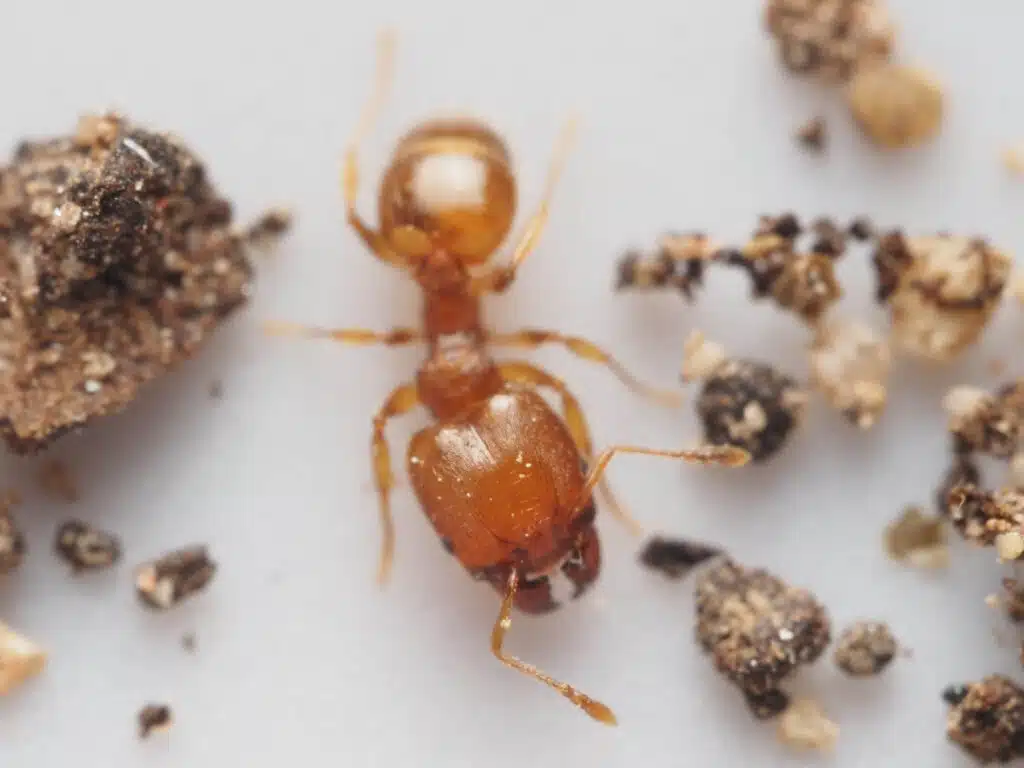
This species of red ant (Pheidole bilimeki) is typical of tropical regions of the world. It lives in a wide habitat from Costa Rica to the United States.
Bilimerk’s Big-headed ants are common pests in areas they inhabit.
They enter homes for food and they can be difficult to safely remove as they have a painful sting.
Eliminating these ants involves getting rid of their nearby nests. Bilimek’s Big-headed Ants nest under rocks and logs next to the house.
15. Larger Citronella Ant
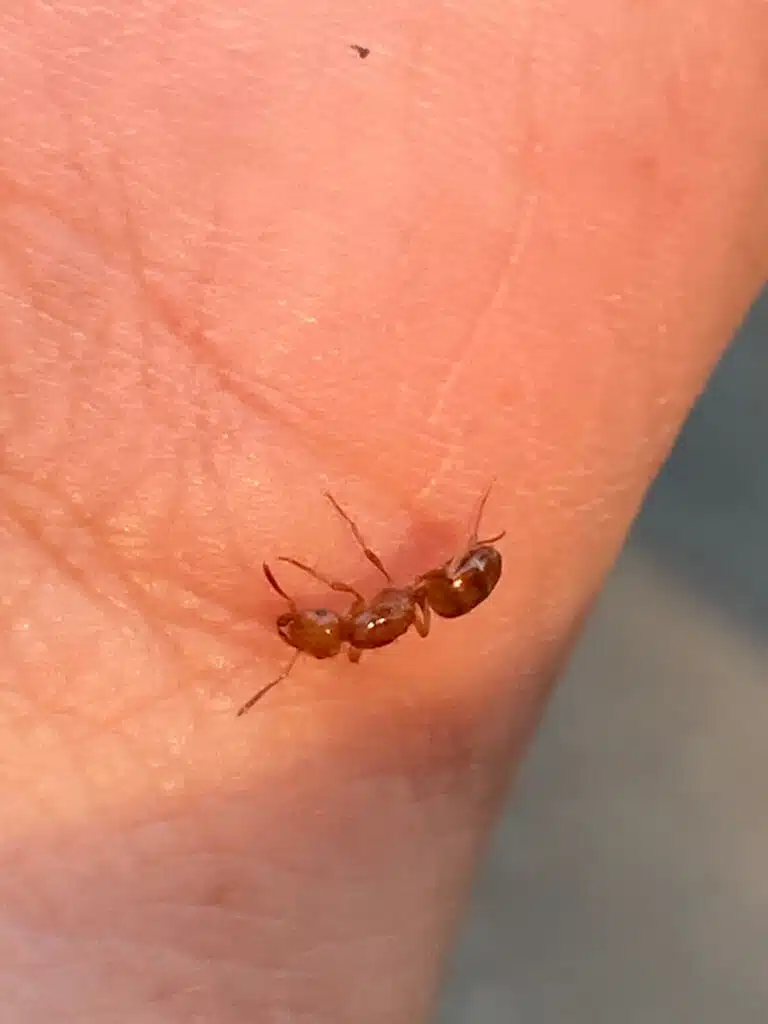
These ants have a bright red or red-to-orange color and nest in ant mounds.
Subterranean nest building is also specific to this species.
Larger Citronella Ants (Lasius interjectus) are named after their citrus-like smell released whenever their nest faces a perceived predator.
Management techniques are required with Larger Citronella Ants as the species often nest with other subterranean species as parasites.
Larger Citronella Ants are parasites of subterranean species such as Smaller Yellow Ants (Lasius claviger) in the United States.